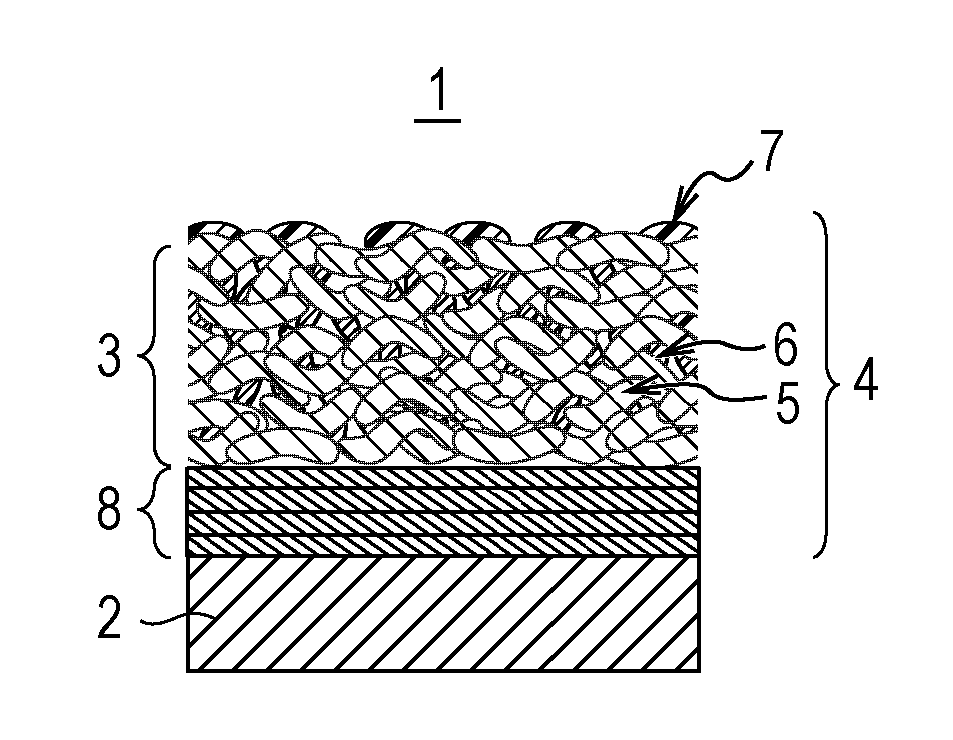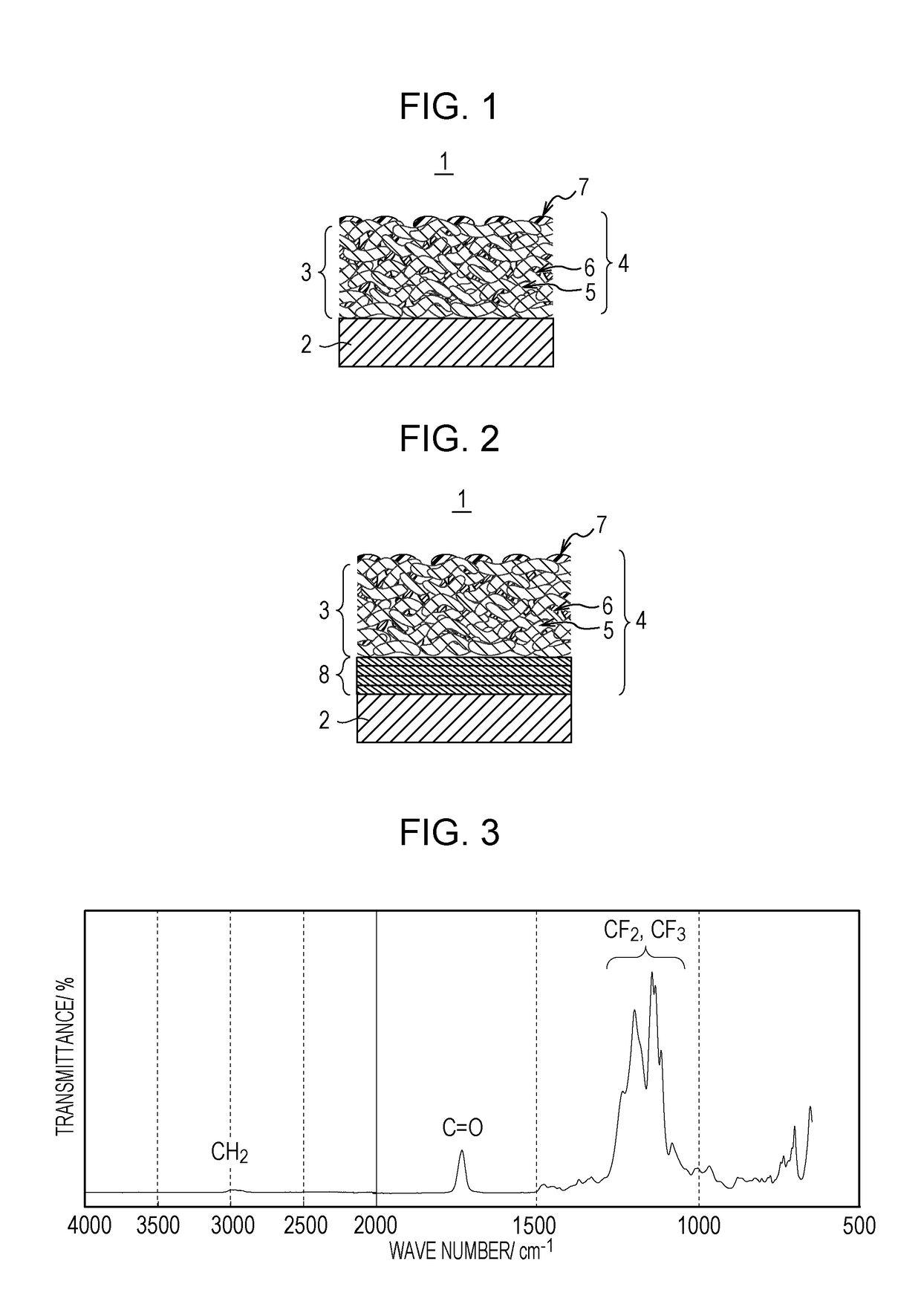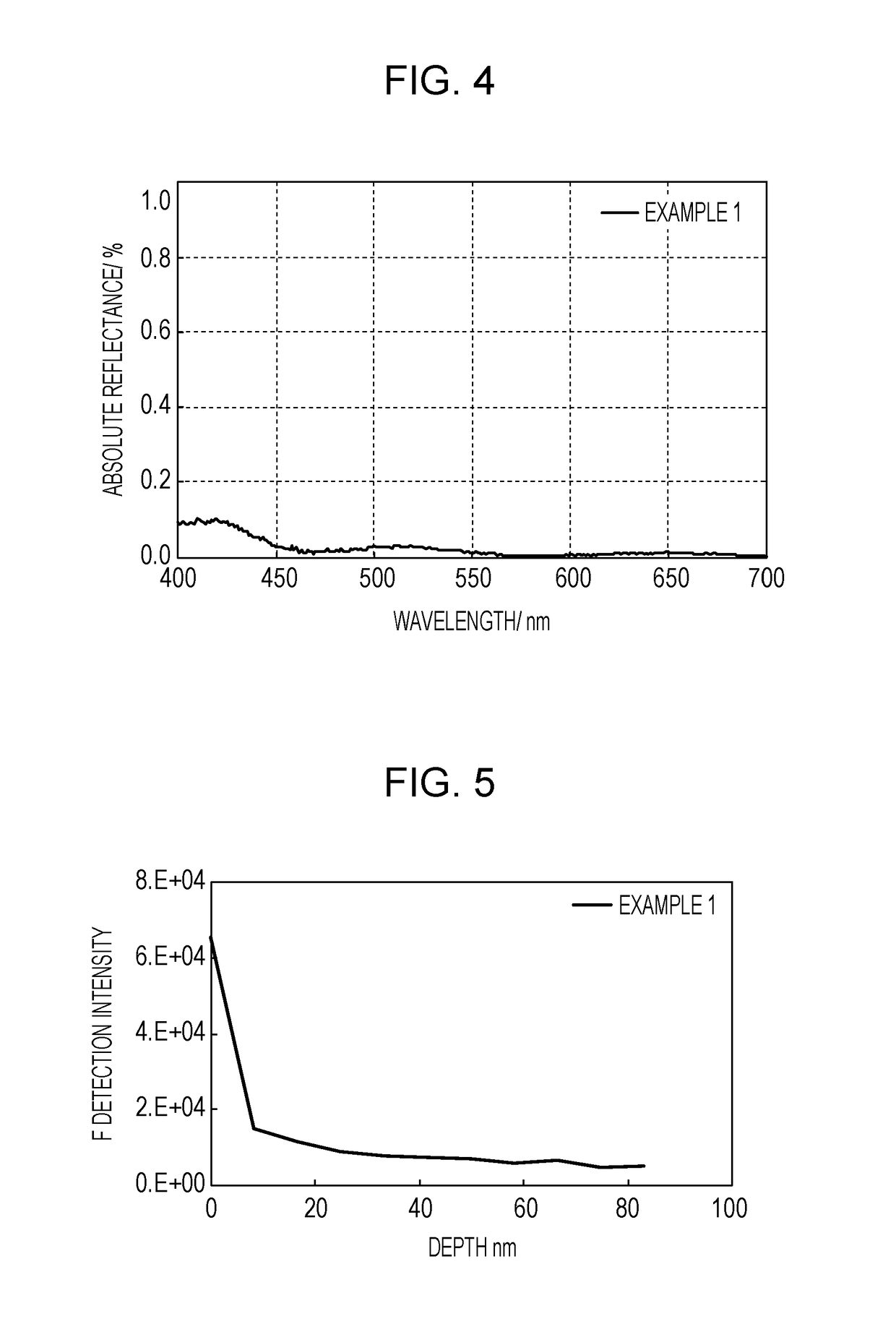Optical member and method for manufacturing the same
a technology of optical components and optical components, applied in the field of optical components, can solve problems such as degrading the optical properties of membranes
- Summary
- Abstract
- Description
- Claims
- Application Information
AI Technical Summary
Benefits of technology
Problems solved by technology
Method used
Image
Examples
first embodiment
Optical Member
[0043]FIG. 1 is a schematic view of an optical member according to an embodiment of the present disclosure.
[0044]The optical member 1 includes a substrate 2, and an antireflection film 4 having a porous layer 3 on the substrate 2. The porous layer 3 contains chainlike silicon oxide particles 5 and a binder 6.
[0045]In the porous layer 3, as shown in FIG. 1, the chainlike silicon oxide particles 5 are bound to each other with the binder 6. The porous layer 3 is provided with a fluororesin 7 thereon.
[0046]In the porous layer 3, the chainlike silicon oxide particles 5 may be in contact with each other or may be indirectly bound to each other with the binder 6 therebetween.
[0047]Advantageously, the chainlike silicon oxide particles 5 are in contact with each other from the viewpoint of enhancing wear resistance of the porous layer 3.
[0048]FIG. 2 is a schematic view of a modification of the optical member 1 according to the present embodiment. In the structure shown in FIG. ...
example 1
[0110]In Example 1, an appropriate amount of chainlike SiO2 particle coating liquid 3 was dropped onto an oxide multilayer composite formed on a glass substrate (nd=1.52, νd=64.1) of 30 mm in diameter and 1 mm in thickness and was subjected to spin coating at 3200 rpm for 20 s. Table 1 shows the thicknesses and the refractive indices of the layers defining the oxide multilayer composite. Then, an appropriate amount of a solution of an acrylic fluororesin having a fluorinated hydrocarbon group and exhibiting the infrared reflection spectrum shown in FIG. 3, Durasurf DS-1101 S135 (produced by Harves, solids content: 0.10% by mass), was dropped onto the surface of the porous layer of chainlike SiO2 particles formed on the multilayer composite and was subjected to spin coating at 3000 rpm for 20 s. The resulting sample was heated at 140° C. for 30 minutes in a hot air circulation oven to yield a substrate provided with an antireflection film.
[0111]The average reflectance and the highest...
example 2
[0112]In Example 2, an appropriate amount of chainlike SiO2 particle coating liquid 3 was dropped onto the same oxide multilayer composite as in Example 1 and was subjected to spin coating at 3500 rpm for 20 s. Furthermore, the same fluororesin solution was applied by spin coating onto the surface of the resulting porous layer of chainlike SiO2 particles formed on the multilayer composite in the same manner as in Example 1, and the resulting sample was heated to yield a substrate provided with an antireflection film.
[0113]The average reflectance and the highest reflectance of the antireflection film were 0.03% and 0.11%, respectively. The contact angles of pure water and hexadecane on the surface of the antireflection film were 111° and 68°, respectively. The antireflection film had a portion having a higher fluororesin content at the surface. The portion has a thickness of 4 nm and the underlying porous layer had a thickness of 107 nm. The refractive index was distributed in the ra...
PUM
| Property | Measurement | Unit |
|---|---|---|
| contact angle | aaaaa | aaaaa |
| refractive index | aaaaa | aaaaa |
| refractive index | aaaaa | aaaaa |
Abstract
Description
Claims
Application Information
 Login to View More
Login to View More - R&D
- Intellectual Property
- Life Sciences
- Materials
- Tech Scout
- Unparalleled Data Quality
- Higher Quality Content
- 60% Fewer Hallucinations
Browse by: Latest US Patents, China's latest patents, Technical Efficacy Thesaurus, Application Domain, Technology Topic, Popular Technical Reports.
© 2025 PatSnap. All rights reserved.Legal|Privacy policy|Modern Slavery Act Transparency Statement|Sitemap|About US| Contact US: help@patsnap.com



